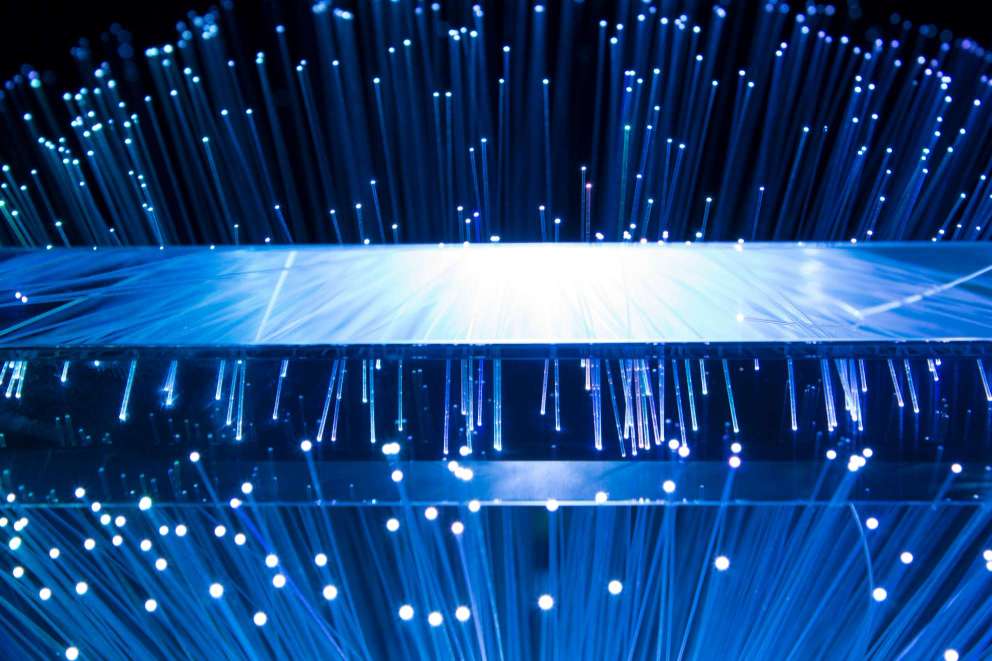Optical Fiber: The Backbone of Modern Communication
7 min read
19 Aug 2024
In today's digital age, optical fiber technology stands as the cornerstone of modern communication systems. With its unparalleled speed, reliability, and capacity, optical fiber has revolutionized the way we transmit data across the globe. This article delves into the significance of optical fiber, its underlying technology, and its transformative impact on communication networks.
The Basics of Optical Fiber
Optical fiber is a thin, flexible strand of glass or plastic that transmits light signals over long distances. Unlike traditional copper wires, which use electrical signals, optical fibers use light to carry information. This allows for significantly higher bandwidth and faster data transmission. An optical fiber consists of three main parts: the core, the cladding, and the protective coating. The core is the innermost part through which the light travels, while the cladding surrounds the core and reflects light back into it, minimizing signal loss.

Advantages of Optical Fiber
High Bandwidth: Optical fibers can transmit large amounts of data at incredibly high speeds, making them ideal for high-demand applications like streaming, gaming, and cloud computing. Low Signal Loss: Optical fibers experience minimal signal loss over long distances, ensuring reliable and consistent communication. This is especially important for international and intercontinental data transmission. Immunity to Electromagnetic Interference: Unlike copper cables, optical fibers are not affected by electromagnetic interference, ensuring a cleaner and more stable signal. Enhanced Security: Optical fibers are difficult to tap into without being detected, making them a more secure medium for transmitting sensitive information.
Applications of Optical Fiber
Telecommunications: Optical fiber is the backbone of global telecommunications networks, enabling fast and reliable internet, phone, and television services. Medical Imaging: In the medical field, optical fibers are used in endoscopes to transmit images from inside the body, aiding in diagnostics and minimally invasive surgeries. Military and Aerospace: Optical fiber technology is employed in military and aerospace applications for secure and high-speed communication. Data Centers: Modern data centers rely on optical fiber to handle the immense data transfer requirements, ensuring efficient and speedy operations.
The Future of Optical Fiber
5G and Beyond: As 5G networks continue to roll out, the demand for optical fiber infrastructure will only increase. Optical fiber is essential for supporting the high speeds and low latency required by 5G technology. Smart Cities: The development of smart cities, with interconnected devices and systems, will rely heavily on optical fiber networks to manage and transmit vast amounts of data. Quantum Communication: Advances in quantum communication could further enhance the capabilities of optical fiber networks, offering ultra-secure communication channels based on the principles of quantum mechanics. Environmental Impact: Optical fiber technology is more energy-efficient than traditional copper networks, contributing to greener and more sustainable communication solutions.
Conclusion
Optical fiber technology has fundamentally changed the landscape of modern communication. Its high bandwidth, low signal loss, and resistance to interference make it an indispensable component of our digital infrastructure. As we move towards an increasingly connected future, the role of optical fiber will continue to expand, driving innovations and enabling new possibilities in communication, healthcare, defense, and beyond. Embracing and investing in optical fiber technology is crucial for ensuring a seamless and robust global communication network.
More Articles

Public Key Infrastructure (PKI) in Blockchain: Ensuring Secure Transactions
4 min read | 06 Jul 2024

Tokenization: Digitizing Real-World Assets on the Blockchain
4 min read | 05 Jul 2024

Permissioned vs. Permissionless Blockchains: Which is Better?
3 min read | 04 Jul 2024

Nodes in Blockchain: The Building Blocks of Decentralization
3 min read | 03 Jul 2024
More Articles

Quantum Computing's Potential to Solve Complex Game Algorithms
5 min read | 29 Jul 2024

Robotics in Esports: The Next Big Thing in Competitive Gaming?
2 min read | 28 Jul 2024

The Evolution of Microchips: From PCs to Smartphones and Beyond in Gaming
2 min read | 27 Jul 2024

AI-Driven Game Development: How Artificial Intelligence is Transforming Game Design
4 min read | 26 Jul 2024
